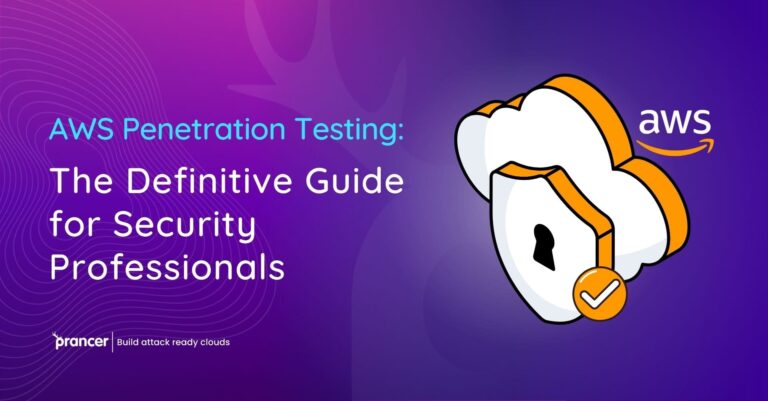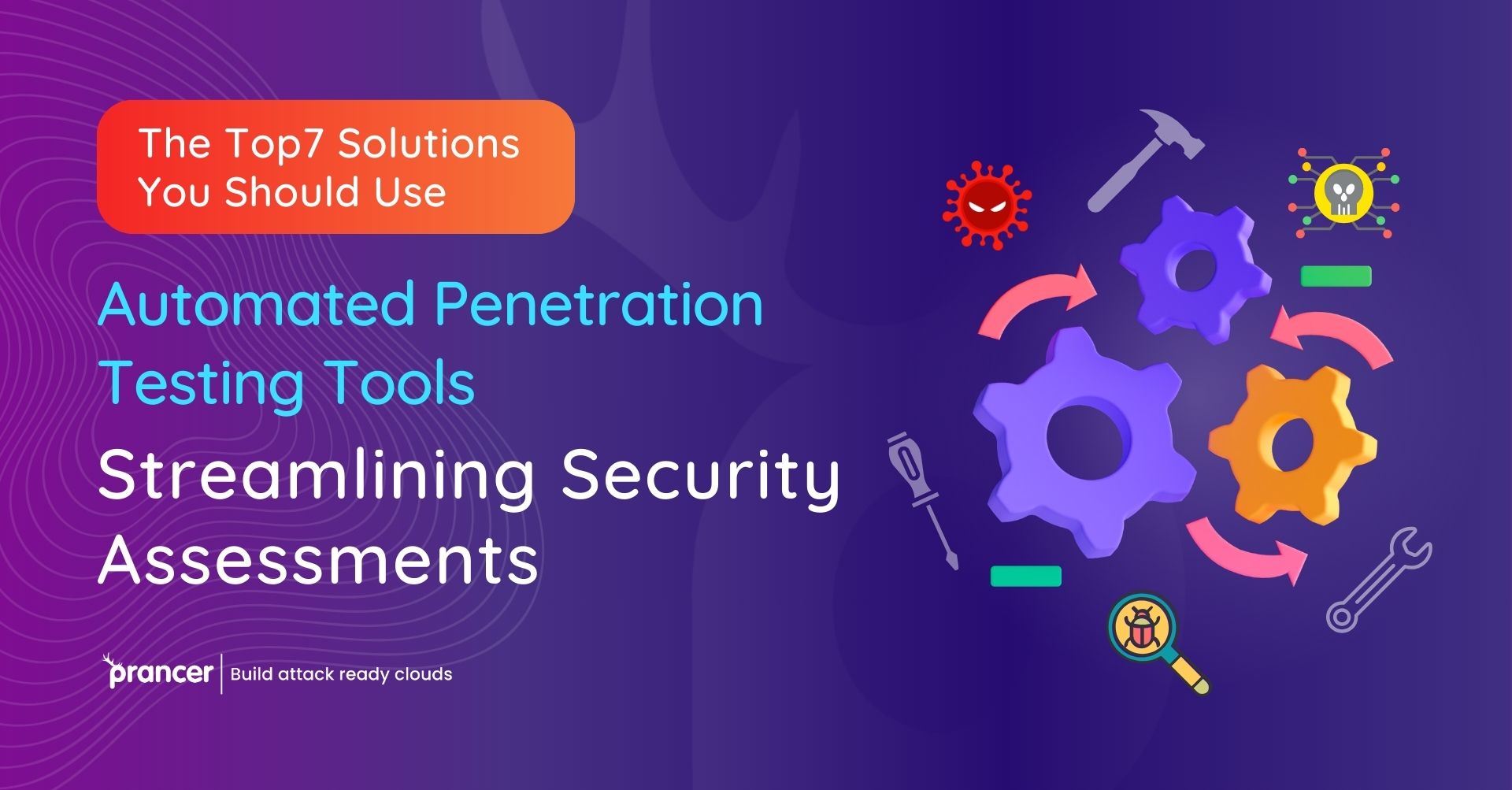

In the dynamically shifting terrain of cybersecurity, keeping a pace ahead of potential threats is more than essential. This is where the prowess of automated penetration testing tools shines, offering a streamlined, effective avenue to evaluate and reinforce your organization’s security framework. In this narrative, we’ll delve into the crème de la crème of automated pen testing tools, with a spotlight on open-source treasures, and see how they can make security assessments a breeze. As a front-runner in the cybersecurity domain, Prancer holds a crucial stance in this sphere, extending top-notch solutions to amp up your organization’s defenses.
When it boils down to securing your digital realm, automated penetration testing tools are your loyal comrades. They mimic the maneuvers of real-world hackers, scouting for soft spots and vulnerabilities in your system. With automation in the driver’s seat, you can spot and rectify security hiccups at a quicker pace, curbing the risk of exploitation.
Here’s a showcase of the top 7 automated pen testing tools you’d want to have in your toolkit:
Metasploit: Metasploit is a powerhouse in simulating cyber onslaughts, famed for its expansive repository of exploits and payloads.
Nessus: A gem for vulnerability scanning, Nessus automates the sleuthing of security issues sprawled across your network.
OpenVAS: Stepping in as an open-source counterpart to Nessus, OpenVAS brings to the table stout vulnerability scanning and management faculties.
OWASP ZAP: With its lens on web application security, OWASP ZAP is your ally in spotting and buffering vulnerabilities in your web apps.
Nexpose: A creation of Rapid7, Nexpose shines in vulnerability assessment and risk management, offering a panoramic view of your security stance.
Aircrack-ng: A maestro in testing wireless networks, Aircrack-ng excels in cracking WEP and WPA keys to gauge Wi-Fi security.
Burp Suite: A darling among web application testers, Burp Suite presents a full spectrum of tools for unearthing vulnerabilities in web applications.
Open-source automated penetration testing tools have carved a niche for themselves, owing to their accessibility and adaptability. They not only pare down costs but also foster community-driven growth. Prancer values the essence of open-source solutions and is an active player in nurturing their development.
Harnessing open-source tools allows you to customize your security evaluations to align with your organization’s distinct requisites. Plus, these tools enjoy the backing of a devoted community of developers, constantly refining and broadening their capabilities. Prancer’s allegiance to these open-source ventures resonates with our aim to offer budget-friendly and state-of-the-art cybersecurity solutions.
At the heart of a solid cybersecurity strategy lies automated penetration testing, or vulnerability scanning. This practice arms organizations with the capability to actively discover and address frailties across their infrastructure, applications, and networks. The automation baked into these assessments warrants consistent and thorough evaluations, reducing the likelihood of missing out on spotting vulnerabilities that could be a playground for adversaries.
Cybersecurity, is now made easier with the use of automated penetration testing tools. These utilities are able to duplicate complex cyber-atackings so that teams can pinpoint and solve issues rapidly. By integrating automation in the testing, the security assessment is sped up and hence, provides an early defence. These automated tools have become more than an additional option, they are now required components for any company’s cyber defense with Prancer’s advanced solution as their frontman and never cease keeping one step ahead of constantly modernizing cyber adversaries.
In the changing landscape of cybersecurity, automated penetration testing tools are an integral part in maintaining a step ahead from developing threats. These tools, proficient in imitation of real life cyberattacks effortlessly expose the flaws of systems making it possible for quick reactions and fortified defenses. Key players in this sphere include Metasploit – known for its wide database of exploits; Nessus concerning the network vulnerability scan, OpenVAS as a reliable open-source alternative solution or offering equivalent performance results with it; OWASP ZAP specializing in web application vulnerabilities detection and assessment; one more outstanding Aircrack-ng responsible mainly on WiFi Prancer is a leading cyber-security company that supports and advocates for the deployment of these tools, especially open source options due to their adaptability and community support. This approach does not only make the security assessment process smooth, but it ensures that organizations get state-of-the art and cost effective solutions to stay secure from fast evolving threats in current digital environment.
Further investigation into the realm of automated penetration testing reveals its increasing relevance and complexity in cybersecurity. These tools, indispensable for effective digital defense are quickly becoming available to provide a wide range of complete and up-to date countermeasures that can be used by organizations.
Advanced Automated Penetration Testing Tool Functionality
Dynamic Attack Simulations: Advanced tools as Metasploit provide updated attack strategies to reflect the latest threats, enabling defenses testing against present and future risks.
In-Depth Network Vulnerability Scans: Nessus and OpenVAS carry out a comprehensive analysis of various network elements to find the potential vulnerabilities that are important for an overall approach in securing all parts of the network.
Targeted Web Application Testing: Tools such as OWASP ZAP and Burp Suite are created to find problems in web applications, including SQL injection flaws but also cross-site scripting.
Wireless Security Assessments: Tools like Aircrack-ng are dedicated to the analysis of wireless network security, addressing various peculiarities associated with Wi-Fi networks.
Risk Analysis and Prioritization: Nexpose does not just detect, it performs a full risk assessment to support the appropriate remediation strategy based on potential impact.
Open-Source Tools for Penetration Testing
Cost-Effective and Versatile: Due to open-source alternatives such as OpenVAS, which provides a cost effective but competent alternative, robust security testing is now available for all organizations.
Collective Expertise and Evolution: Open-source tools, which are created by the community and therefore always perfected to adapt new cyber threats.
Tailored Security Solutions: These tools have a high level of customization because organizations can modify their security testing to meet specific operational needs.
The strategic value of automation in cybersecurity has been touched upon.
Rapid Vulnerability Detection and Response: Automated tools speed up the detection and remediation of vulnerabilities, minimizing attack windows.
Uniform and Thorough Testing: Automation provides an all-inclusive and thorough testing that manages to eliminate the loopholes often seen in manual test procedures.
Proactive Security Measures: It is a proactive type of defense that uses such tools to update security measures when new threats arise.
Seamless Integration with Existing Security Protocols: Integrating automated penetration testing tools into existing security frameworks increases the effectiveness of cybersecurity as well as incident response.
First of all, automated penetration testing tools and especially from the open-source world are central in modern cybersecurity strategies. They integrate the three elements of adaptability, precision and effectiveness in order to ensure that organizations are ready for a dynamic cyber threat landscape. First, firms like Prancer advocate the adoption of these advanced yet affordable tools to facilitate organizations with state-of-the art and futuristic security solutions in this digital age.
Automated penetration testing is one of the pillars in today’s cybersecurity, providing powerful and effective tools for strong digital protection. Dynamic and comprehensive testing capabilities, from network vulnerability scans to targeted web application assessments are based on key tools such as Metasploit and Nessus. Aircrack-ng is targeted at wireless network security, while OWASP ZAP and Burp Suite deal with web specific vulnerabilities. Nexpose is distinguished by its risk analysis capabilities, which help to focus remediation efforts.
Open-source tools such as the OpenVAS are critical, which provide low cost and customizable solutions driven by a community. They offer flexibility and ongoing improvement that matches changing cyber threats. Automated penetration testing tools allow for faster detection and remediation of vulnerabilities that take place uniformly within all digital infrastructures. They enable organizations to follow a proactive defense approach, continuously modifying their security systems in reaction to new threats and easily integrate with current security practices.
Automated penetration testing tools, especially open-source ones are essential in the cybersecurity landscape. These tools offer broad, efficient and flexible capabilities required in combating the dynamic cyber threat environment. Companies such as Prancer promote these tools and enable organizations to acquire cutting-edge, robust but cost effective security solutions in the digital world.
Conclusion:
To wrap up, automated penetration testing tools are a cornerstone for organizations on the quest to ramp up their cybersecurity apparatus. The top seven tools spotlighted in this article, when married to Prancer‘s prowess and commitment to open-source endeavors, lay a solid groundwork for easing the security assessment process. By effortlessly weaving these tools into your cybersecurity blueprint, you are well on your way to efficiently spotting and fixing vulnerabilities, thereby ensuring a more fortified digital defense mechanism.
